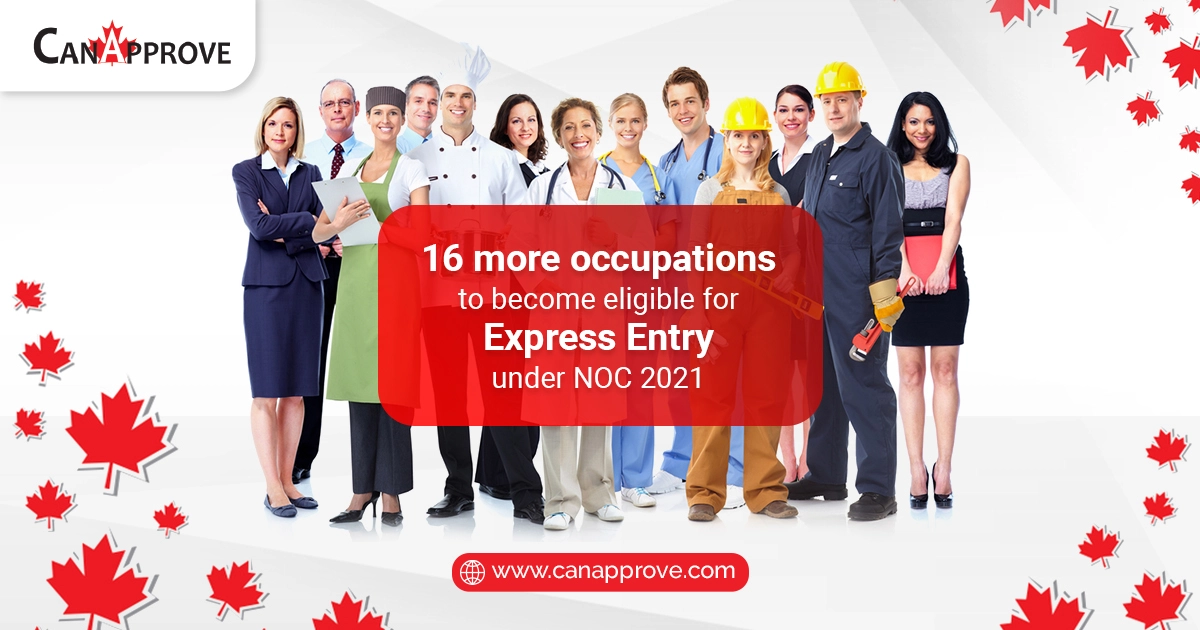When Canada introduces the updated National Occupation Classification in November 2022, a total of 16 new occupations will become eligible for Express Entry. Similarly, three occupations would become ineligible. Similarly, three occupations would become ineligible. Currently, NOC 2016 is being used to determine the eligibility of occupations under temporary and permanent residency programs. The NOC, which is being managed by Employment and Social Development Canada (ESDC) and Statistics Canada, is revised in every 10 years. The following occupations would become eligible under Express Entry when NOC 2021 is implemented:
The NOC, which is being managed by Employment and Social Development Canada (ESDC) and Statistics Canada, is revised in every 10 years. The following occupations would become eligible under Express Entry when NOC 2021 is implemented:
- Payroll administrators;
- Dental assistants and dental laboratory assistants;
- Nurse aides, orderlies and patient service associates;
- Pharmacy technical assistants and pharmacy assistants;
- Elementary and secondary school teacher assistants;
- Sheriffs and bailiffs;
- Correctional service officers;
- By-law enforcement and other regulatory officers
- Aestheticians, electrologists and related occupations
- Residential and commercial installers and servicers
- Pest controllers and fumigators
- Other repairers and servicers
- Transport truck drivers
- Bus drivers, subway operators and other transit operators
- Heavy equipment operators
- Aircraft assemblers and aircraft assembly inspectors
The occupations that would become ineligible under NOC 2021 are:
- Other performers
- Program leaders and instructors in recreation, sport and fitness
- Tailors, dressmakers, furriers and milliners.
However, these occupations would still be eligible under other immigration streams such as Provincial Nominee Program.
TEER system for occupation classification
NOC 2021 would also replace the current four-category “skill level” structure with the new six-category system. The new system outlines the level of Training, Education, Experience and Responsibilities (TEER) required for each occupation. Previous system divided the occupations into four categories:
- NOC A: Jobs that require university degree
- NOC B: Jobs in skilled trades or that require a college diploma
- NOC C: Jobs that require intermediate skills or job-specific training.
- NOC D: Labor jobs that require on-the-job training
Occupation categories under TEER system
The TEER System has six categories- 0, 1, 2, 3, 4 and 5.
TEER 0: Management occupations
TEER 1: Occupations that require a university degree and several years of experience in a specific occupation under Category 2
TEER 2: Post-secondary level education of two or three years or completion of an apprenticeship training program of two to five years.
Occupations with supervisory or significant safety responsibilities, like firemen.
Several years of experience in a TEER category 3 occupation. (If applicable)
TEER 3: Post-secondary education or apprenticeship training of less than two years.
More than six months of on-the-job training, training courses or specific work experience; or work experience in a specific occupation from TEER category 4(if applicable)
TEER 4: Completion of secondary level education
On-the-job training
Experience in a specific occupation from TEER category 5(If applicable)
TEER 5: Short work demonstration, but there are no formal education requirements.
It is expected that the TEER system would provide more clarity on the level of education and work experience. The skill type mode would also create artificial categorizations between low and high skilled jobs. Further, TEER system would also give stakeholders a better sense of skills required for each occupation.
Do you wish to know in detail about the requirements for Express Entry migration to Canada? Contact CanApprove now.


